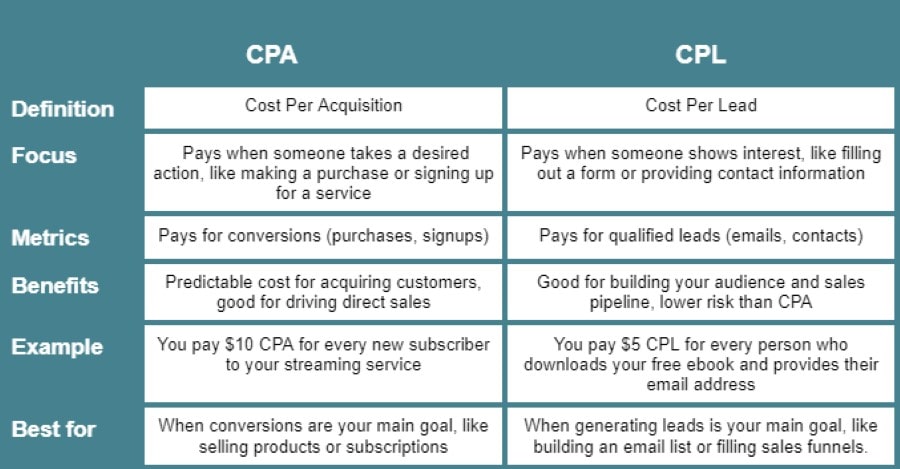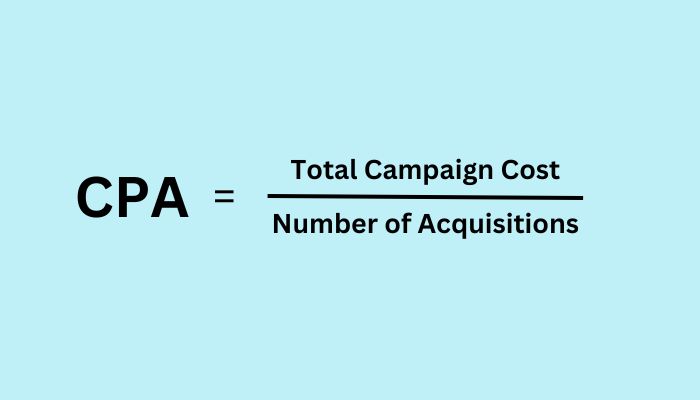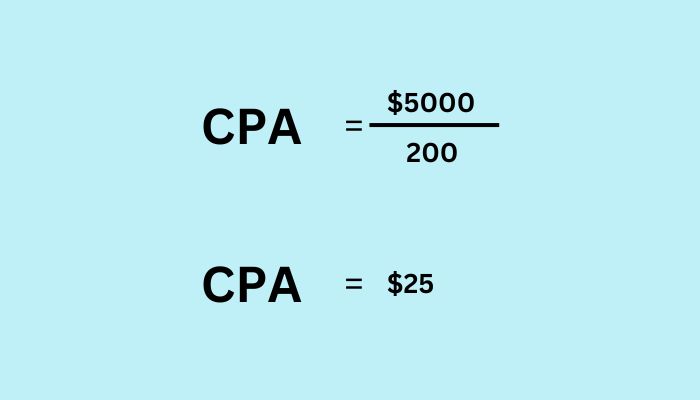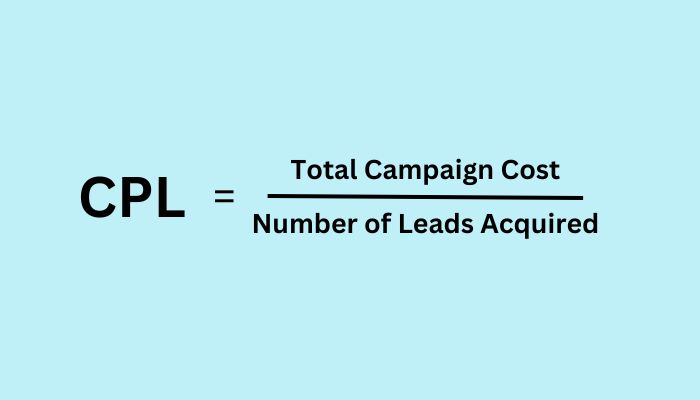In the fast-changing world of digital marketing, businesses are constantly seeking innovative strategies to maximize their return on investment (ROI). Want to track your marketing results? Learn about Performance-Based Marketing! This article explains two key metrics: Cost Per Lead (CPL) and Cost Per Action (CPA)
You’ll find helpful tips, examples, and even how to calculate them yourself!
What Is Performance-Based Marketing
Before we tackle CPA and CPL, let’s understand performance-based marketing. Performance-based marketing is a model where advertisers pay only for specific actions or outcomes, such as clicks, conversions, or sales, rather than for exposure. This approach aligns the interests of advertisers and publishers, as payments are tied to tangible results. The process typically involves setting clear objectives, selecting relevant performance indicators, and using analytics tools to track and measure results. This approach offers a high degree of accountability and can be highly cost-effective, as it minimizes the risk of paying for ineffective advertising.
Performance-based marketing primarily has two key metrics:
- CPA (Cost Per Acquisition)
- CPL (Cost Per Lead)
To comprehend their significance and implement a strategic approach, let’s delve into a more detailed understanding of these metrics and explore the methods for their calculation.
CPA Meaning: Cost Per Acquisition in Performance-Based Marketing
CPA stands for “Cost Per Action” or “Cost Per Acquisition.” as we have already mentioned above, this is a performance-based advertising model where advertisers pay a fee each time a specific action is completed. In simple terms, it’s a metric used in online advertising to measure how much it costs to get a user to take a specific action, such as making a purchase, filling out a form, or signing up for a service. Advertisers use CPA to understand the effectiveness of their campaigns by calculating the average cost incurred for each desired action.
For example, if an advertiser spends $100 on a campaign and gets 20 people to make a purchase, the CPA would be $5 ($100 divided by 20). Lower CPA values are generally considered more efficient, as they indicate that the advertiser is spending less money to achieve the desired outcomes. CPA is an important metric for businesses to assess the return on investment from their advertising efforts.
Advantages of CPA:
- High ROI Potential: CPA focuses on specific actions, ensuring that each dollar spent has the potential to convert into tangible results.
- Targeted Advertising: Advertisers can hone in on actions that are most beneficial to their business, whether it’s a sale, a sign-up, or a download.
- Risk Reduction: Since payment is based on action, the risk of paying for ineffective advertising is minimized.
Disadvantages of CPA:
- Higher Costs per Action: The cost per action can be higher compared to other models, like cost per click (CPC).
- Complex Tracking and Management: CPA campaigns require robust tracking systems to accurately monitor actions and prevent fraud.
- Limited Reach: Focusing solely on actions can sometimes limit the scope of a campaign’s reach or brand awareness efforts.
CPL Meaning : Cost Per Lead in Performance-Based Marketing
CPL stands for “Cost Per Lead.” In simple terms, it’s a metric used in online advertising to measure how much it costs to acquire a potential customer lead. A lead is someone who has shown interest in a product or service by providing their contact information, such as filling out a form or signing up for a newsletter.
For example, if an advertiser spends $50 on a campaign and gets 10 people to sign up for more information, the CPL would be $5 ($50 divided by 10). Advertisers use CPL to understand the cost-effectiveness of their marketing efforts in generating leads. Similar to CPA, a lower CPL is generally preferred as it indicates that the advertiser is spending less money to acquire each potential customer lead.
Advantages of CPL:
- Lead Generation Focus: CPL is effective for businesses where lead generation is a key step in the customer journey.
- Easier to Track: Comparatively easier to track than CPA, as the focus is on lead generation.
- Budget-Friendly: This can be more budget-friendly than CPA, as leads often cost less than actual conversions.
Disadvantages of CPL:
- Lead Quality Variability: Not all leads are equal in quality, and some may not convert into sales.
- Potential for Lower ROI: If the leads do not convert well, the ROI can be lower compared to other models.
- Dependence on Sales Funnel Efficiency: CPL’s success heavily relies on the subsequent steps of the sales funnel.
Difference Between CPA and CPL?

CPA vs CPL: Which One To Choose for Your Marketing Goals
- Businesses with a Direct Sales Model: Often prefer CPA as it ties directly to revenue generation.
- Businesses Focusing on Building Customer Relations or Databases: Might find CPL more beneficial.
How to Calculate Cost Per Acquisition and Cost Per Lead
In the fast-paced world of digital marketing, understanding and mastering key performance metrics is crucial for optimizing campaign effectiveness. Cost Per Acquisition (CPA) and Cost Per Lead (CPL) are two such metrics that play a pivotal role in assessing marketing ROI. Let’s delve into the intricacies of calculating these metrics to empower marketers in making informed decisions.
How to Calculate Cost Per Acquisition (CPA)

Step-by-Step Guide:
Identify Campaign Costs: Sum up all costs associated with the marketing campaign, including ad spend, creative development, and any other related expenses.
Determine the Number of Acquisitions: Define the desired action that qualifies as an acquisition (e.g., a completed sale, registration, or download). Count the total number of successful acquisitions resulting from the campaign.
Apply the Formula: Plug the values into the CPA formula to obtain the cost incurred for each acquisition.
Interpret Results: A lower CPA indicates a more cost-effective campaign, while a higher CPA may warrant adjustments to improve efficiency.
Example:
Let’s say you run an online advertising campaign for your e-commerce store, spending a total of $5,000 on ads. During the campaign, you track conversions, and you find that the campaign resulted in 200 completed purchases.
Calculation:

Interpretation:
The Cost Per Acquisition in this example is $25. This means, on average, you spent $25 in advertising to acquire each customer or generate each sale during the campaign.
How to Calculate Cost Per Lead (CPL)

Step-by-Step Guide:
Determine Campaign Costs: Sum up all expenses associated with the campaign, including advertising, content creation, and any lead generation tools or platforms used.
Identify Acquired Leads: Define what constitutes a lead for your campaign (e.g., a filled-out form, subscription, or contact request). Count the total number of leads generated through the campaign.
Apply the Formula: Use the CPL formula by dividing the total campaign cost by the number of leads acquired.
Analyze CPL Value: A lower CPL signifies efficient lead generation, while a higher CPL may prompt adjustments to enhance the campaign’s cost-effectiveness.
Example:
Let’s say you run a digital marketing campaign to generate leads for your email newsletter. During the campaign, you spend a total of $2,000 on various marketing channels. After the campaign, you find that you have acquired 500 new leads.
Calculation:

Interpretation:
The Cost Per Lead in this example is $4. This means, on average, you spent $4 in advertising to generate each lead during the campaign.
Tips to Integrate CPA and CPL Into Your Marketing Strategy
Integrating CPA (Cost Per Action) and CPL (Cost Per Lead) into your marketing strategy involves a blend of strategic planning and data-driven tactics. These tips are designed to optimize the effectiveness of your campaigns, ensuring that you’re not only reaching your target audience but also achieving your business objectives most cost-effectively.
- Understand Your Audience: Tailor campaigns to your target demographic.
- Set Clear Objectives: Define clear goals for each campaign.
- Optimize Landing Pages: Ensure high conversion potential.
- Utilize A/B Testing: Continuously test and refine strategies.
- Track and Analyze Data: Monitor campaign performance and make data-driven decisions.
- Adjust Bidding Strategies: Be flexible in your approach to CPA and CPL bidding.
- Focus on Quality Content: Engaging content can increase conversion rates.
- Leverage Retargeting: Use retargeting to maximize conversions.
- Balance Between CPA and CPL: Find the right mix of CPA and CPL strategies based on campaign results.
- Educate Your Team: Ensure everyone understands the nuances of CPA and CPL.
Today, in the rapidly changing world of advanced digital marketing, it is of the utmost importance that one is able to take the slightest lead over those they compete with. For businesses aiming at achieving a sure deal of better marketing activities that would drive useful results, a professional digital marketing agency is the ideal partner to involve.